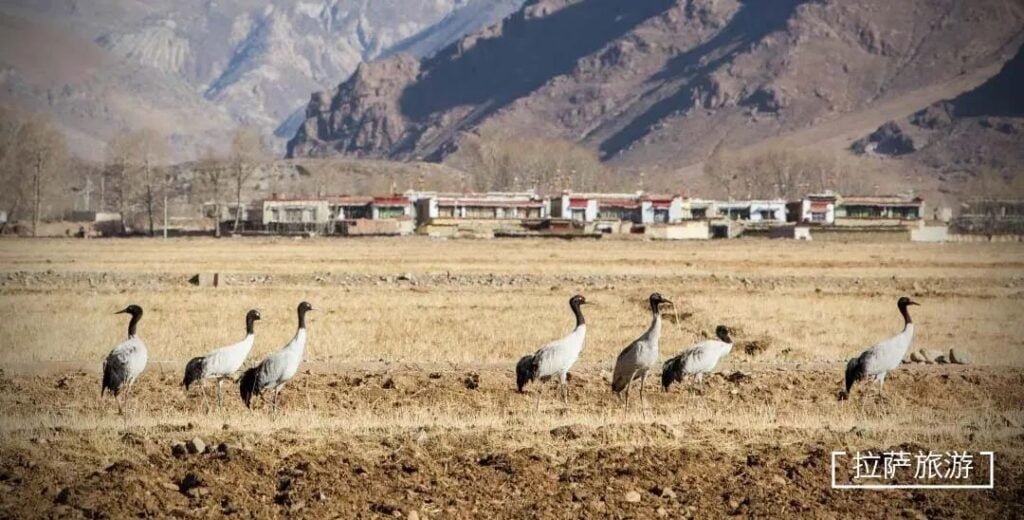The Captivating Charm of Lhasa
Lhasa, the heart of Tibet Autonomous Region, stands as a city soaked in cultural richness and natural splendor. Often hailed as the ‘City of Sunlight’, it’s more than just a destination; it’s a poetic journey. But what exactly elevates Lhasa to a realm of breathtaking beauty?
Unveiling the Splendors of Lhasa
Embark on a visual expedition to uncover the myriad wonders of Lhasa. Winter here is not just a season but a new perspective. It’s a time when the pace of life decelerates, allowing travelers to soak in the tranquil allure of the city, away from the rapid tempo of daily life.
Winter Bird Watching: Lhasa’s Seasonal Highlight
Lhasa’s winters are synonymous with bird watching, a unique spectacle that attracts nature lovers globally. As October arrives, a variety of migratory birds seek sanctuary in the warmer climes of the Lhasa River Valley. This annual migration heralds the start of winter in Lhasa and presents an unparalleled opportunity for avid birdwatchers.

Zongjiao Lukang Park: Witnessing the Pulse of Lhasa
At the base of the majestic Potala Palace lies Zongjiao Lukang Park, a serene spot that mirrors the everyday rhythm of Lhasa’s inhabitants. Leisurely strolls in the park offer glimpses of playful waterfowl, foraging in the lake, creating a harmonious and lively tableau. This park serves as a serene haven, showcasing the tranquil yet vibrant life of Lhasa.
Lalu Wetland in Winter
During winter, the Lalu Wetland transforms with the arrival of migratory birds like the Ruddy Shelduck and the Bar-headed Goose, adding vibrancy to the otherwise serene landscape. This national nature reserve is now open to the public during winter, providing a unique experience for nature lovers.
Visitor Guidelines for Lalu Wetland
We advise all visitors to adhere strictly to the regulations, cooperate with security checks, refrain from bringing fire sources, damaging the environment, harming wildlife, littering, or bringing pets. Please also ensure the safety of children to prevent accidents.
Linzhou County: The Bird Watching Paradise
Linzhou County, located to the northeast of Lhasa and known for its fertile lands, is a true birdwatcher’s paradise. The county’s numerous rivers and reservoirs create ideal conditions for agriculture, which in turn provides a perfect habitat for migratory birds. The best birdwatching spots in Linzhou are in the vast valleys of Linzhou Qiangga Township and Linzhou Kazi Township.

The Black-necked Crane: Lhasa’s Most Special Visitor
The Black-necked Crane, a species unique to China and a national first-class protected animal, is the only crane that breeds and winters on high-altitude plateaus. It holds a crucial position in biodiversity conservation efforts.
Recent efforts in Tibet have led to a significant increase in the wintering population of Black-necked Cranes, with over 11,175 individuals recorded in 2022. These cranes have become a familiar and welcome sight in the fields of Linzhou County.
A Silent Promise: Harmony Between Humans and Nature
The local residents have a silent understanding with the Black-necked Cranes. As the cranes arrive to spend the winter and leave with the onset of spring, they represent a beautiful harmony between humans and nature, a promise unspoken but deeply felt.
An Invitation to Lhasa
We invite you to experience the beauty of Lhasa firsthand. While photographs capture glimpses, the true essence of Lhasa can only be fully appreciated in person.
A Reminder for Visitors
Please remember that our ‘special guests’, the migratory birds, deserve respect and care. When observing or photographing them, adhere to guidelines and enjoy bird watching responsibly.

